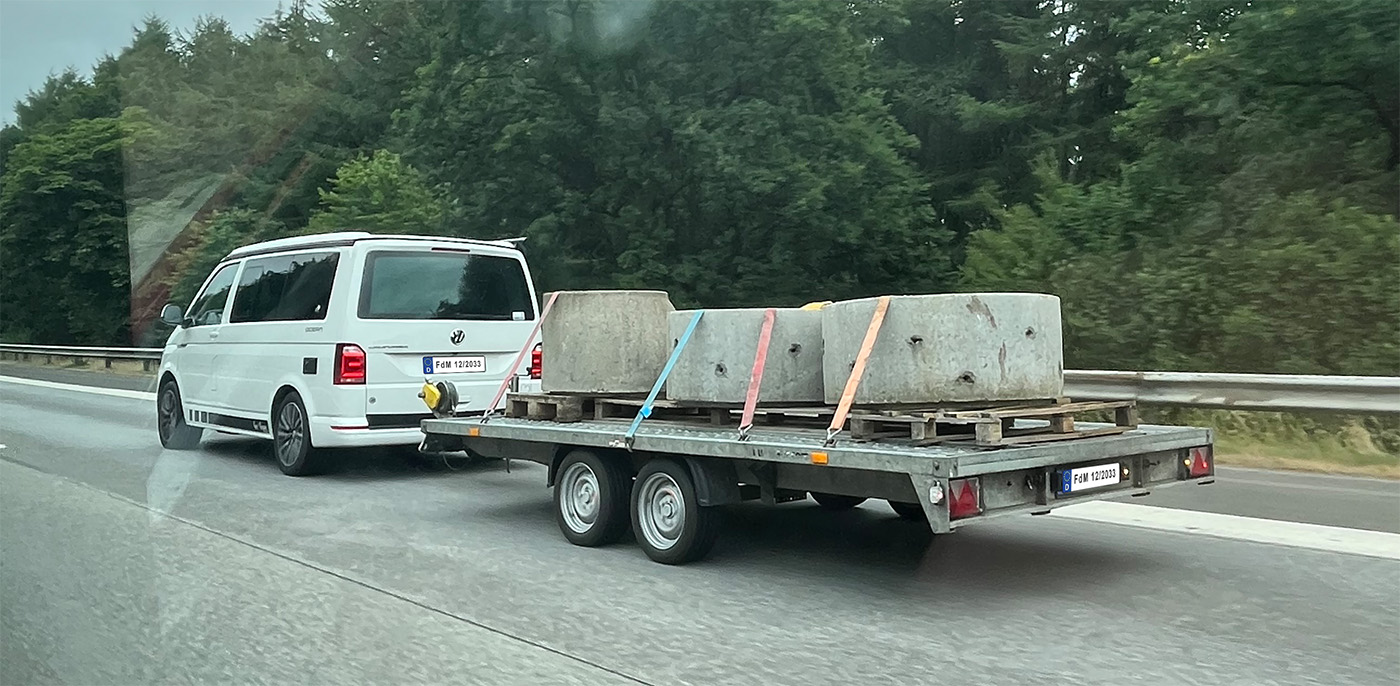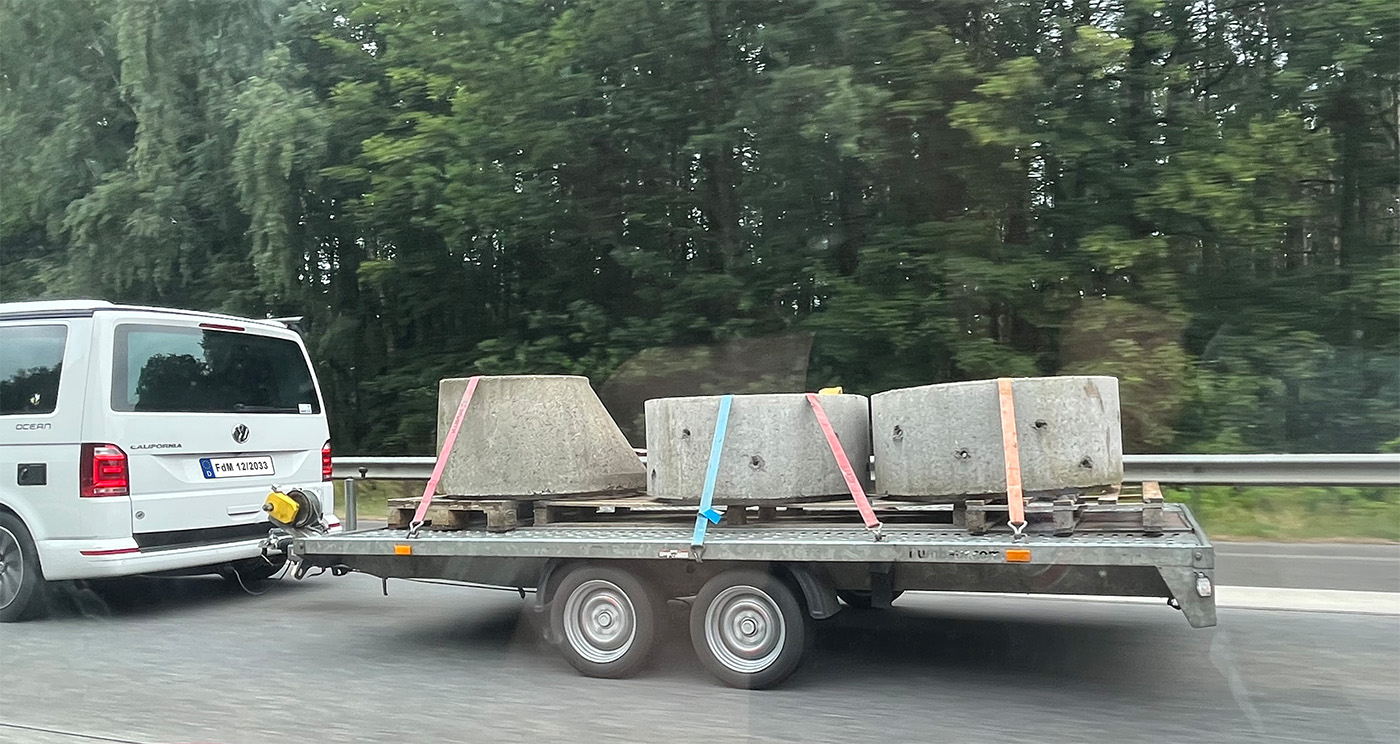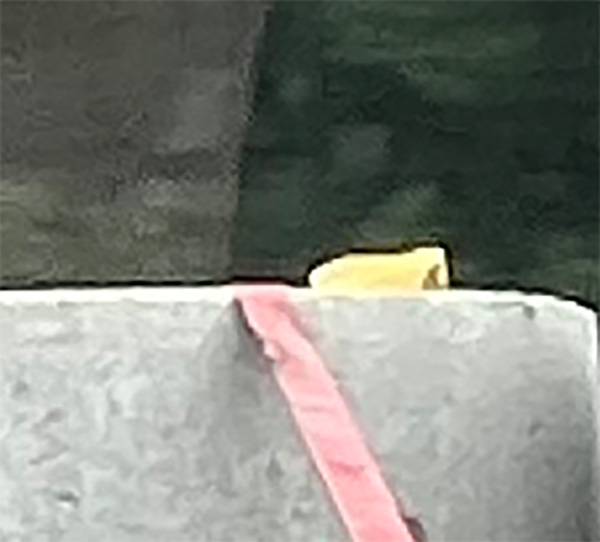| Photo of the month – December 2023 |
[German version] |
Just fetch a few shaft casings …
and pray nothing goes wrong!

Figure 1 [Matthias Böhmen]
A dual-axle trailer actually intended to transport cars is whizzing along the motorway laden with shaft casings. In principle, there’s nothing wrong with that – as long as the weight is suitable and the load is properly distributed. As far as the weight is concerned, we’ll assume that everything is in order. However, we’ll take a closer look at the load distribution in the next photo.

Figure 2 [Matthias Böhmen]
If the front shaft casing is heavier than the two behind it then the load distribution might be alright. Why are we so concerned about the load distribution? Because trailers like this, intended for transporting cars, are very sensitive to uneven load distributions. This negatively affects the motion of the trailer behind the towing vehicle. It weaves from side to side (like a skier) and this can cause it to shed its load or to swerve violently.
Clearly, little attention was paid to the supporting substructure. It rather looks as if the loaders used what happened to be around at the time. The middle pallet, in particular, does not inspire us with very much confidence. If it collapses then the pretensioning in the tie-down lashing will vanish and the already appalling load securing measures will be over and done with.
Securing of the load:
Once again, tie-down lashings, some of them attached to load securing points and others to the vehicle frame.

Figure 3 [Matthias Böhmen]
If we zoom in, we can see areas that suggest that the belts are practically fit for scrapping. However, this is hardly surprising because no edge protectors or protective sleeves were used for the load.
The middle shaft casing was lucky. It was blessed with two belts while the others had to make do with just one apiece. Clearly it was thought that weight alone would keep the load in place, true to the belief that something that heavy can’t possibly move! We would have expected someone to show a little more care and attention for their precious vehicles.
The lowest level of friction was undoubtedly between the pallets and the perforated plate. We can only guess as to whether there was any lumber in the middle of the trailer. However, because two pallets are lying on the frame of the perforated plates as if they are on rails, the friction cannot have been very good. To be on the safe side, we’ll assume μ = 0.2. Because the weight is unknown and we cannot properly estimate the friction, we’ll go straight to our favorite securing method: direct lashings. A head loop around the first shaft casing and a loop lashing to the side at all three casings. We’ll also lend the friction a helping hand and place anti-slip material at least under the pallets (where the value is at its lowest) so that they are isolated from the loading surface in terms of friction. With regard to the load itself, we will now also make sure that the shaft casings are loaded as a tight fit against one another. If that is not possible then we can place squared lumber between them during loading and also secure this with a tie-down lashing.
We would also protect the belts with protective sleeves because there are too many changes of direction. This makes the task a lot easier.
Your load securing columnists wish you a calm and peaceful advent
Back to beginning
